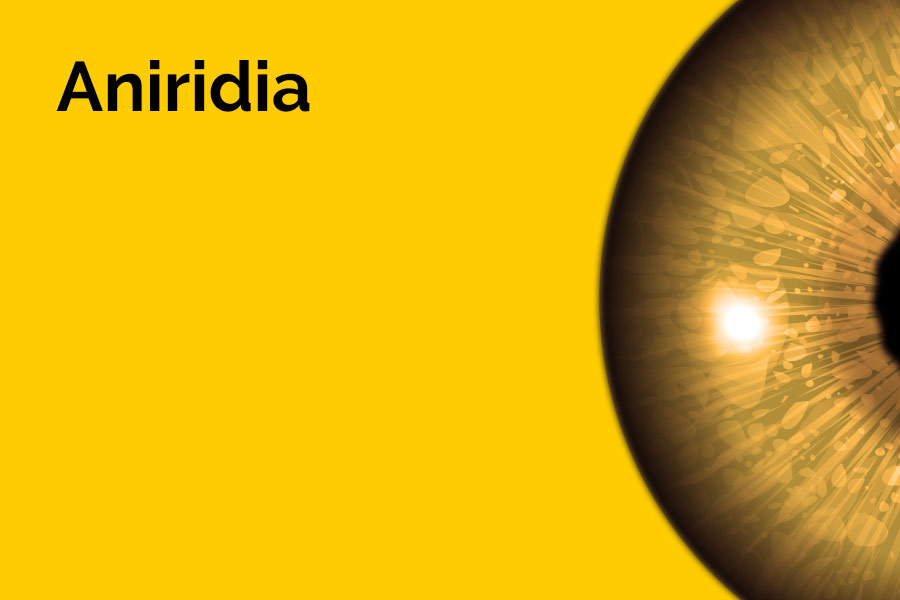Aniridia
Aniridia is a rare genetic disorder that affects 2 in every 100,000 people. The disorder is characterised by a complete or partial absence of the iris (the coloured part of the eye). These abnormalities can cause the pupils to be misshapen or abnormal. Aniridia can lead to a reduction in the sharpness of vision and an increased sensitivity to light.
The degree of vision problems for those with aniridia varies greatly. Some sufferers are legally blind, while others have good enough vision to drive.
Later in life, people with aniridia may develop other eye problems such as glaucoma and cataracts, which appears in 50% to 85% of people with aniridia.
Diagnosis
Aniridia can be diagnosed during an examination by an ophthalmologist. A special piece of equipment known as a slip lamp can be used to detect parts of the iris that are missing.
Symptoms
Aniridia symptoms may vary immensely from one patient to another. Some individuals exhibit only mild effects, while others have profound ocular abnormalities.
Aniridia can cause the eye to appear black, with no colour separating the white area from the pupil. As we rely on the iris to control the amount of light that enters the eye, the absence of the iris causes extreme sensitivity to light (photophobia). Many people born with Aniridia also experience involuntary eye shakiness, a condition known as nystagmus.
The degree to which the condition affects vision varies from one person to another, however, some children with Aniridia have 20/30 vision or greater. In general, visual acuity for people with Aniridia ranges from 20/80 to 20/200.
Aniridic keratopathy (a clouding of the cornea) is also common in individuals with Aniridia.
Treatments
Unfortunately, there are no medical treatments currently available to cure the disease. Associated conditions such as glaucoma and cataracts are however treated to reduce vision problems as much as possible. An ophthalmologist will keep patients under close observation in order to control light sensitivity and maximise visual functionality. Eye drops are often used in cases where glaucoma is also present.
Due to the absence of the iris patients are often prescribed to wear glasses or contact lenses to minimise light sensitivity. Glasses and sunglasses are also another way of protecting the eyes from further damage and external injuries. Some patients are prescribed with painted contact lenses to help improve cosmesis, reduce glare and improve the vision of the affected eyes.
Prevention
Unfortunately, there is no way to prevent the inherited disorder. If your family has a history of the condition you should consider genetic counselling and gene reviews before deciding to have children. Genetic testing can help identify the chance of having a baby born with an abnormality.
